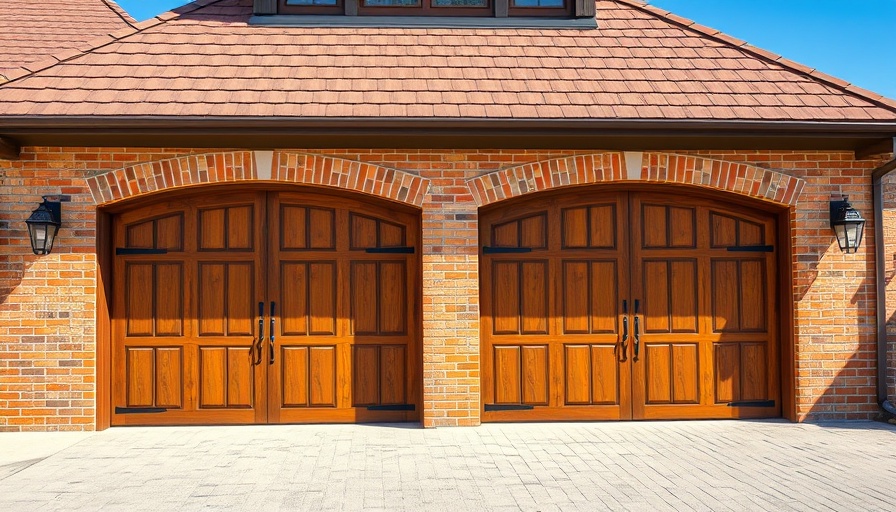
Considering a New Garage Door? Here’s What You Need to Know!
Upgrading a garage door is not only a matter of aesthetics but also of functionality, energy efficiency, and safety. If your garage door is causing you headaches with frequent breakdowns or visible wear and tear, it might be time for a change. A new door can brighten up your home’s curb appeal and boost security, but there are essential aspects to consider before making that purchase.
Why Getting an In-Person Quote is Essential
Online shopping has made buying garage doors incredibly convenient, but it's important to step away from the screen for a moment. Engaging with a knowledgeable salesperson during an in-person consultation can save you from future headaches. Each garage is unique; measuring factors such as headroom, side clearance, and even the door's shape is vital. This attention to detail ensures you get the perfect fit and style tailored to your home.
Choosing Materials: The Right Balance Between Style and Maintenance
While wooden garage doors are undeniably beautiful, they come with maintenance responsibilities that might be daunting for some homeowners. Real wood requires periodic treatments to withstand weather conditions, and neglect can lead to extensive repairs. Luckily, you can achieve the stunning look of wood through embossed steel doors or composite materials, which mimic wood’s charm without the upkeep.
What's New in Garage Door Insulation?
With increasing awareness around energy efficiency, opting for better insulation in your garage door is a smart move. By spending a bit extra for polyurethane instead of standard extruded polystyrene, you not only increase the door’s R-value significantly—but you also potentially lower your energy costs. Given our inclination towards sustainable living, there’s never been a better time to invest in energy-efficient solutions for your home.
Understanding Spring Lifespan: A Few Extra Bucks for Longevity
Garage door springs are crucial for smooth operation, but many homeowners overlook their importance. Investing in springs rated for higher cycles—like those rated for 20,000 cycles—can double their lifespan for a nominal increase in price. This small difference in cost now could mean fewer repairs down the line, offering both convenience and peace of mind.
Enhancing Curb Appeal with Customization Options
The garage door is often one of the largest components of a home's façade, and a well-chosen door can dramatically improve its exterior. Utilize manufacturer websites that allow you to upload a photo of your home and virtually select different door styles, colors, and features. This interactive tool makes choosing the right door style not only easier but also enjoyable!
Safety and Functionality: Key Features to Look For
Investing in safety features for your garage door can prevent accidents, especially if you have children or pets. Modern doors come equipped with reverse sensors and smart technology that can alert you to any unusual activity. By choosing a door with these integrated features, you can add a layer of security and ensure that your home remains a safe haven.
When to Replace Your Garage Door Opener
Since your garage door opener might eventually fail alongside the door, it often makes sense to replace both together. Doing so can save on installation costs while ensuring that both operate seamlessly. Pay attention to the features you need—quieter models with advanced capabilities are becoming increasingly popular and necessary for those living in attached homes.
Concluding Thoughts: Make an Informed Decision
Upgrading your garage door should not be taken lightly. With countless options available on the market today, it's critical to consider all aspects—from style and materials to energy efficiency and safety. Before making a purchase, consult with professionals, weigh your options, and take advantage of technology to visualize your choices. A well-informed decision can enhance the look of your home while providing long-lasting functionality.



Write A Comment